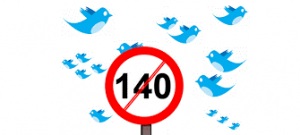The social media landscape in Japan is extremely diverse, ranging from business-orientated apps to recreational and socializing applications that facilitate vast audiences globally.
Japanese social media has somewhat changed over the past couple of years and continues to do so.
This dynamic movement in technological advances has led to the rise of the digital era, also understood to be ‘The Chaos Theory’.
This theory emphasizes the evolution, unpredictability and nonlinear nature of the digital world we live in.
In order to acclimatize and adapt to this digital evolution, we need to consider the various platforms that these applications operate on.
The most utilized social media platforms in the Japanese industry are Facebook, Twitter, Instagram and Line.
In order to utilize these platforms effectively, you need to understand the nature thereof.
Thus when one considers the relevancy and effectiveness of these online spaces in the industry, their statistics indicated their reason for being.
Facebook: it’s a slow grow
Let’s take a look at Facebook and the relevancy for this application in the Japanese market.
Currently, the active Japanese Facebook user rate is almost 26 million (Humble Bunny, 2020).
This platform is utilized by both males and females, although prevalence is seen amongst males in Japan.
The range in Japan that shows the highest activity is 25-34 years of age (Statista, 2019).
In Japan specifically, Facebook is growing rather slowly compared to its competitors.
Although this platform is established in the Japanese market, it has not yet reached the popularity and active user numbers that Twitter and Line have generated.
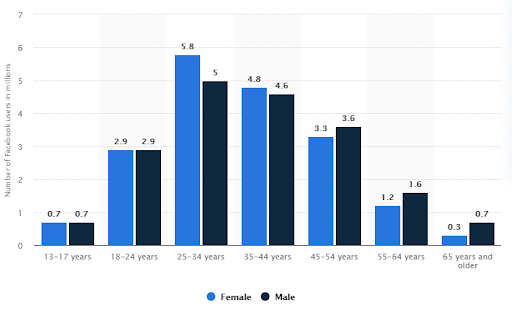
Facebook has been the medium for companies such as Square Enix and DeNA as a means of penetrating a specific target market and generating a large user volume as a result.
In Japan, Facebook serves as a platform for professional purposes, rather than social purpose.
Therefore is it safe to say that the older generation of working adolescents are more likely to be found on Facebook rather than teens.
For this reason, I would highly recommend Facebook as a platform for business purposes, penetrating a specific target audience and having a larger reach to various markets.
Twitter: Highly competitive
The number of active users for Twitter continues to grow rapidly.
Twitter had 48. million users in 2019. This statistic indicates the competitiveness between their rivals Facebook (26 million) and Instagram (33 million).
Although Instagram seems to be vastly more competitive in terms of the number of users, the purposes for which each platform is used are different.
Therefore comparing the two with one another is not a true reflection of its popularity.
In Japan, Twitter and Facebook are largely utilized for business purposes, whilst Instagram is mainly used for socializing and personal marketing.
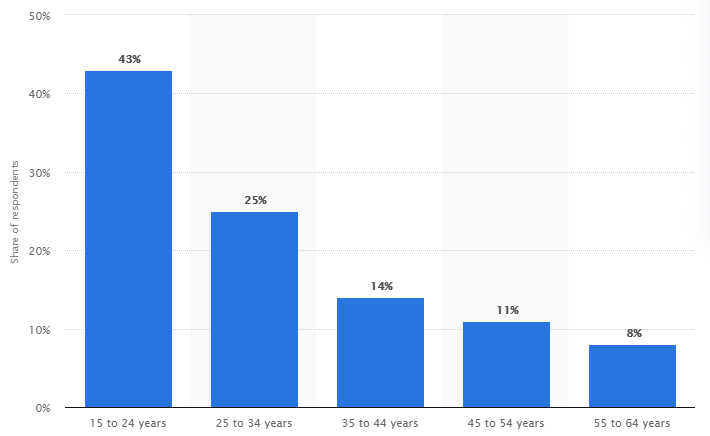
38.1% of the Japanese population is on Twitter with the highest user activity occurring within the age range 15-24 (43%) (Statista, 2019).
Companies that utilize Twitter are Kirin, Orbis, Panasonic Japan, BTS Japan and Japan Airlines to name only a few.
This platform is largely utilized by these brands in order to enhance online presence and reputation as well as to maintain brand awareness across its following.
Thus I would suggest the utilization of Twitter in Japan as a platform for enhancing online brand presence, reputation, and awareness.
Instagram: gaining momentum
On the other hand, Instagram is proving to be ‘the fastest growing social media platform’ with 26% of the Japanese population actively using the platform and 33 million users, one can understand this statement.
Interestingly enough, the predominant user is female (42.8%) and males accord for 28.4% of usage (Statista, 2019).
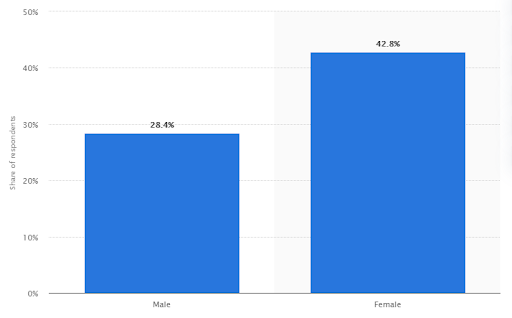
Two Tokyo-based companies that have started using Instagram as a platform for employee recruitment purposes are Liddell (marketing company) and KAJA Design (interior design and furniture making company).
For both of these companies, the Instagram App is a channel through which direct and instant communication between the brand and potential employees are communicated on.
This enables the participants with direct and easy access to the brand in terms of the device on which they can access the brand or relevant information.
For the brand on the hand, the application is time and cost-effective.
This platform serves largely to improve and maintain a positive online reputation, positive brand perspective, direct and instant communication between the brand and viewers as well as enhancing top-of-mind brand awareness throughout the account following.
LINE: BIG in Japan
LINE has a staggering 83 million monthly active users as of the 4th quarter of 2019 (Statista, 2020).
This social service was founded in Japan and accommodates 73% of the country’s population aged 13 and above monthly (Datareportal, 2020).
Brands in Japan that have started utilizing Line have seen great success in terms of brand awareness, penetrating a specific target audience and generating an active online presence in the market.
Enhancing the engagement and brand experience with followers, Louis Vuitton included exclusive Line wallpapers to followers who engaged with the official message menu 8 days consecutively (Douglas, 2017).
Line has already surpassed its forecasted number of users in Japan, which is 58 million in 2021, in the 4th quarter of 2019 with 83 million. The next step for the biggest social media app in Japan is to focus their developments in finance, offline services, and AI.
The most popular social media networks, as rated by the Japanese are LINE, Twitter, Facebook, and Instagram (top 4).
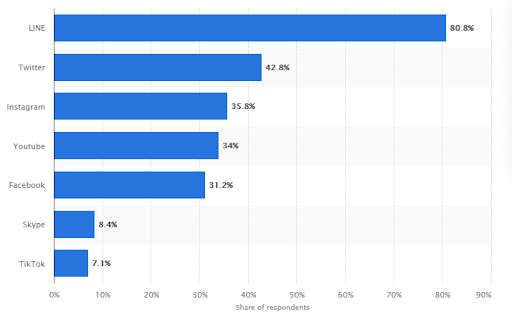
Trend Setting in Digital Marketing
Social media in Japan for 2020 looks similar to previous years, but some vital factors will determine whether you are able to optimally utilize these platforms to your advantage.
Some trends to look out for in Japan in 2020 are video, new business features, and influencer marketing.
More specifically, Facebook is expected to increase video usage amongst its users thus viewers can prepare themselves for brands doing a lot more video advertising, promoting, and conferences than ever before.
After receiving many complaints about its limited character count, Twitter has increased its character limit from 160 to 280 in 2017.
Twitter is expected to accommodate its audiences by increasing the character limit, thus enabling users of all languages to express themselves without having to revise or reword their sentences in order for it to fit the character limit comfortably.
In 2020, users can now schedule the posting of their tweets and can easily switch between personal and business accounts without having to log off.
Instagram is predicted to become a platform that aims to optimally leverage influencer marketing for brands.
Influencer marketing is being utilized by a majority of companies globally, whilst the rest are all planning on implementing this marketing tool in the near future.
The digital world is forever changing and the trends today may change tomorrow.
Due to the deterioration of organic reach, the most important thing to understand about this digital space is that if it is utilized correctly, you will transcend global networks.
Info Cubic Japan houses a brilliant team of social media professionals who will take your brand’s social media marketing to the next level. Contact us today!




